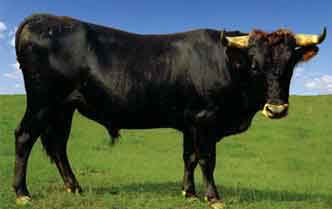How to Season Meat Like an Expert: The Important Things to Know
If you want to season meat correctly, there are certain things you should know. Check out this guide on how to season meat the right way.
Decades of generational cooking methods and health concerns have instilled fear into home cooks everywhere. If there's one thing that terrifies them, it's salt. Americans have become, by nature, chronic under-seasoners.
And yet seasoning is one of the most important components to flavorful meat. You can buy the best cut of beef around and have all the latest cooking utensils. But at the end of the day, an underseasoned steak won't be as salivating as one found at a restaurant.
And that's because the chefs aren't afraid to season it properly. Of course, there's more to seasoning than throwing a ton of salt on the meat. Here's how to season meat like a professional.

When to Season Meat
Before we cover how to season meat, we need to understand when. Naturally, you should always season your food. But there's a debate over how soon you should season before cooking.
To find a conclusive answer, Kenji López-Alt of Serious Eats tested a variety of seasoning methods. What he found was you should cook right after salting or let the meat rest overnight. What's up with that?
Salt pulls liquid out of your beef. By throwing it in the pan immediately, the dry surface lends itself to a great sear. Otherwise, all that moisture makes it impossible to form a crust.
But if you wait long enough, like seasoning meat overnight, most of the water will have time to return. And the salt will come with it. For the specifics, you should check out the food lab article.
Using the Right Seasoning
After that diversion, we're ready to get into the seasoning mix. And like timing your spices, this is a bit more complicated than you'd think.
Most home chefs consider all salt to be the same. But your beef won't see things that way. Choose the wrong type of salt and you'll be left wondering if you even seasoned it.
Always go with kosher salt. Kosher salt is larger than conventional table salts. And larger salt crystals are better for two reasons.
Since kosher salt is larger, you have more control while you're seasoning meat. After all, you're not going to measure seasonings by volume or weight. Different cuts vary, so it's something you have to do by eye alone.
The second reason is essential to form the perfect crust. Kosher salt is more easily absorbed into the beef's outer layer. If you're still not convinced, we urge you to take a look at our kosher sea salt guide.
But as important as salt is, it shouldn't be the only seasoning you bring to the table. You need some grit, some spice -- some pepper.
If you want the best flavor from your spices, then you'll want your black pepper freshly ground. Size isn't important here. While salt plays a special chemical role in making the perfect steak, fresh pepper has a place at the table for taste alone.
How to Season Meat
When you're ready to enjoy some world-class meat, it's time to take it out of the fridge. It's important you give the beef time to reach room temperature. That ensures a better crust and more even cooking overall.
As the meat warms up, it'll start to sweat. Take a paper towel or two and dab all surfaces of the meat until it's as dry as possible. This will make it easier for the seasoning to stick, and again, you'll want that dry exterior for crust formation.
Now it's time to salt and pepper your beef. Don't be afraid that you're overseasoning. You should coat every inch of the beef's surface, sides included.
When you're done seasoning, there should be a clear layer of salt and pepper covering almost every inch. Does it seem like a tad much?
It really isn't. Remember that you can't season the inside of the beef directly. This thin outer coating has to provide the seasoning for every bite.
If you're getting into it, some chefs suggest adding larger sea salts besides our kosher and black pepper coating. Go for flaky, big sea salt crystals, as these can take your crust to the next level.
How to Tenderize Meat
We've covered all the seasoning essentials. But you should know that tenderizing meat is another way to jazz things up.
There's no need to tenderize high-quality beef. This is best done to cheaper cuts from low-end suppliers.
What is tenderizing? It's a process that weakens collagen, or connective tissues. By destroying these bonds, the meat becomes more tender and is thus tenderized.
One way to tenderize meat is to make use of brute force. Whether with a mallet or a hammer, you can pound out that collagen. The beef will flatten as you hammer away, so keep that in mind for cooking times.
An easier way to tenderize is to marinate the cut. However, you should know that acidic marinades can't perform miracles. And if done wrong, they can turn meat mushy, rather than tender.
Create a flavorful marinade with a limited amount of acid, such as lime juice or vinegar. And don't soak the meat for more than a quarter of an hour. There's no point in excessive marination since the acid only affects the exterior.
Become a Well-Seasoned Cook
Who knew seasoning could be so complicated? In addition to managing cooking times, you have to contend with different types and quantities of salt.
Like everything in the kitchen, learning how to season meat is a skill. Just keep at it. Before too long, you'll be impressing your friends, family, and even yourself.
Of course, quality beef isn't derived from seasoning. The meat itself is the main flavor contributor. Invest in your taste buds and browse our selection of 100% grass-fed Criollo beef.








